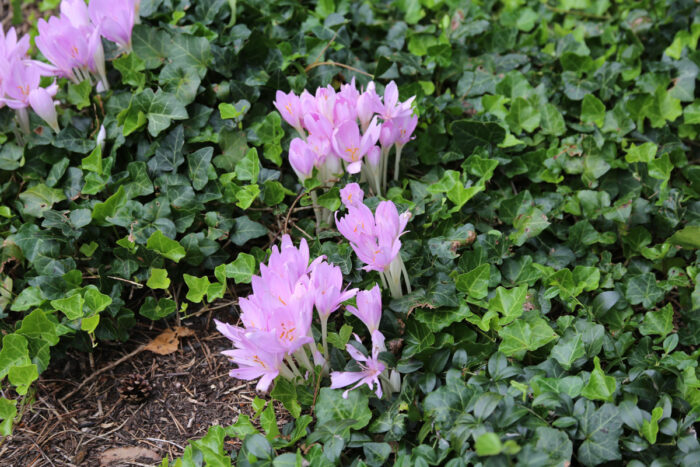
In spring, I always look forward to bulbs bursting through the ground. Searching for precious blooms amid the wet leaves and branches provides a fun reason to wander the garden. Autumn is another time of year that bulbs can add excitement. Taking a walk about the garden as temperatures start to cool, I often find several treasures to lighten up the darkening days. The following are a few of my favorite fall-blooming bulbs to try in the Northwest. See more: Favorite Plants for Fall

Fall crocus
The colchicums are among the first to show up in September. Autumn crocus (Colchicum autumnale, Zones 4–8) has a delicate and somewhat fragile lavender flower. It pops up from the ground with no stems and no leaves, offering a surprising bright bloom in shady open ground. Autumn crocus is happy in sun to mostly shade and has low moisture needs. A grouping planted under a Japanese maple (Acer palmatum and cvs., Zones 5–9) is an ideal combo, with the lavender crocus blooms contrasting magically with the bright orange-yellow fall foliage of the maple.

Last year I added ‘Waterlily’ fall crocus (Colchicum ‘Waterlily’, Zones 4–7) to my beds. This variety is a little sturdier than C. autumnale probably because it has more petals. It prefers partial sun and a more exposed bed, which may help it stay more compact.

Hardy cyclamen
The variable hardy cyclamen (Cyclamen hederifolium, Zones 5–9) is a highlight in the snowdrop (Galanthus spp. and cvs., Zones 3–7) bed. Cyclamen prefers sun to partial shade, is drought tolerant and summer dormant, and is beautiful in mass. Hardy cyclamen will spread where it is happy, and its serrated silver leaves are visible at the same time as the flowers. Some cyclamen show flowers first, with the leaves emerging only after the plants have finished blooming.

Autumn daffodil
The final two bulbs are a bit more usual. Autumn daffodil (Sternbergia lutea, Zones 6–9) has bright yellow flowers and looks quite a bit like a yellow crocus. It blooms from September to October and persists into winter. It likes to be dry and warm during summer for the best flower show in fall. I expect autumn daffodil to be fabulous this year because it has been very warm and dry. I’ve planted it in an open border with partial sun close to the front of the bed. I like being able to see it close to the path.

Queen Olga’s snowdrop
I’m a big fan of snowdrops, so it was exciting to learn of a fall-blooming option. Queen Olga’s snowdrop (Galanthus reginae-olgae, Zones 6–9) forms a nice clump in partial shade. The white blooms are quite different than most fall colors and show well under ferns. A strong, musky fragrance adds to the allure. The foliage has a silver stripe in the middle of the leaf. It likes dry conditions in the summer and good moisture in the spring.
From a planting aspect, remember that these bulbs go dormant in summer, and you may see an open space that feels like it needs to be planted. I sometimes forget there is something occupying that spot. You can prevent these “blank” spots in the bed by adding annuals. By carefully planting around the bulbs with shallow-rooted annuals, the empty spot goes away. The annuals are then easily discarded in fall.
Most gardeners should be more aware of these season-extending plants. These bulbs are great multipliers and naturalize well in the garden. They provide food for foraging insects and help them prepare for winter. All are available by mail order or in local nurseries, so now is the time to add them to your plant collection.
—Susan Calhoun is the owner of Plantswoman Design in Bainbridge Island, Washington.
See more
More Northwestern Regional Reports


















Comments
Log in or create an account to post a comment.
Sign up Log in